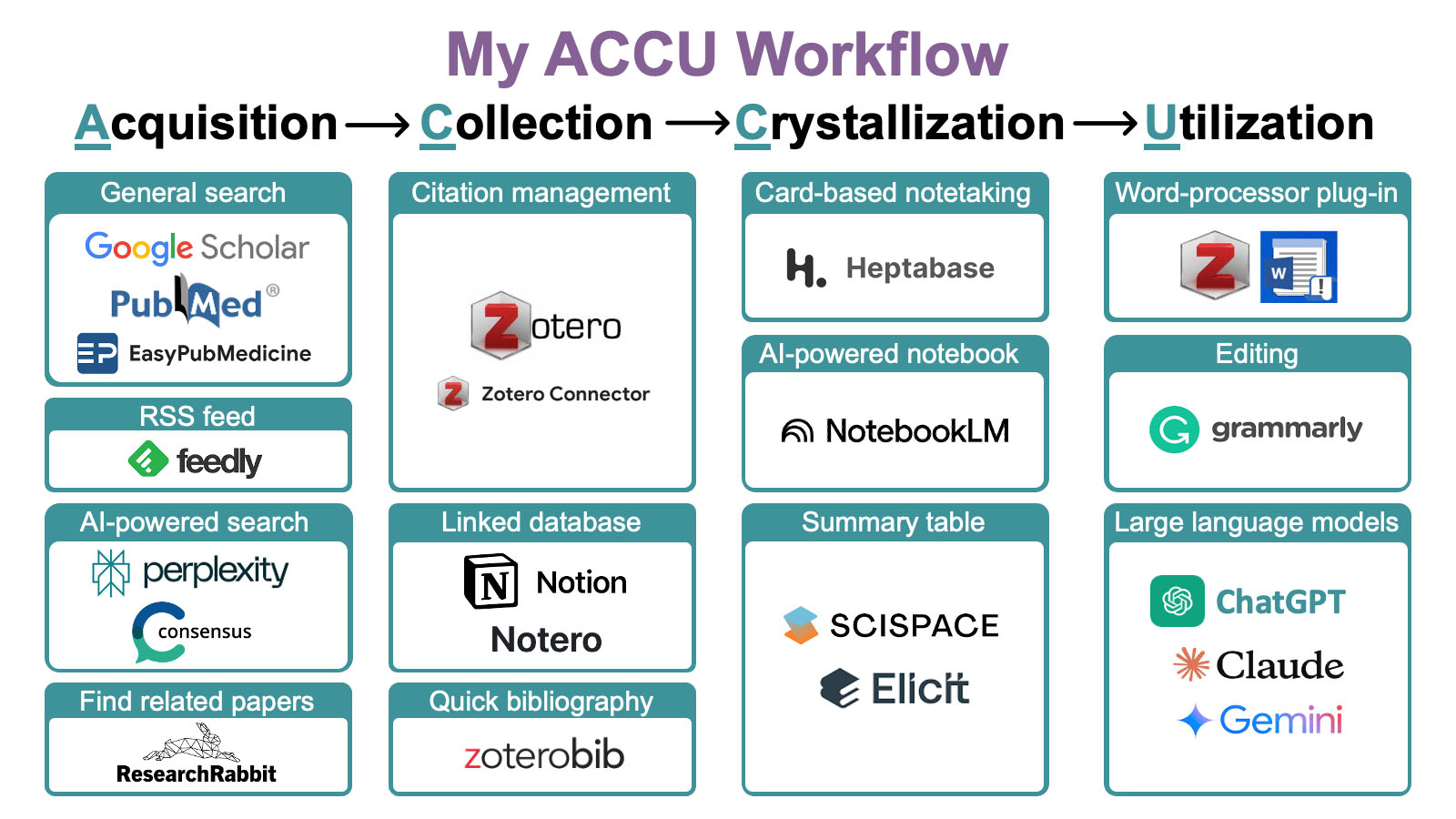Publications
2025
-
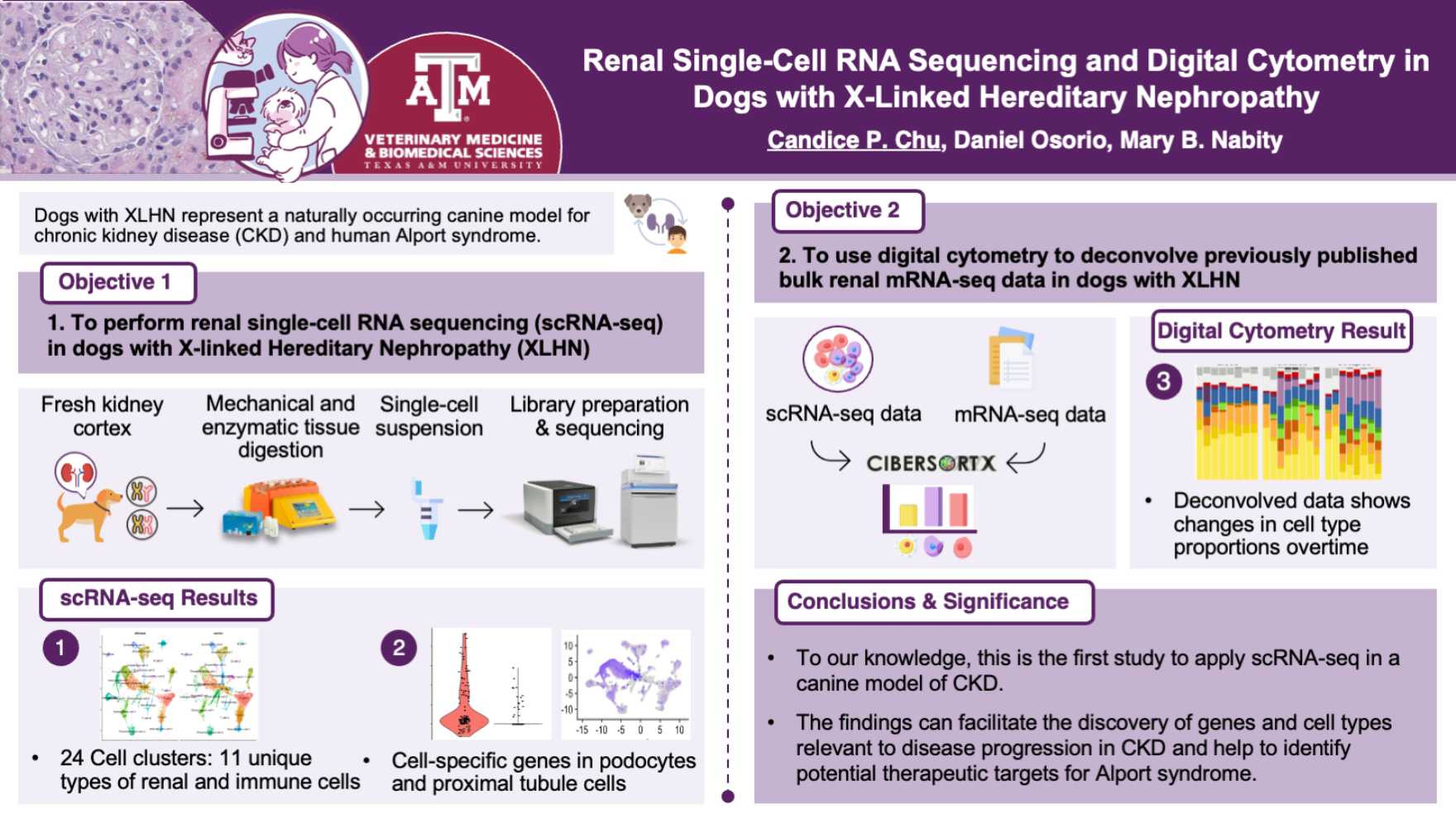 Renal single-Cell RNA sequencing and digital cytometry in dogs with X-linked hereditary nephropathyCandice P. Chu, Daniel Osorio, and Mary B. NabityAnimals, 2025
Renal single-Cell RNA sequencing and digital cytometry in dogs with X-linked hereditary nephropathyCandice P. Chu, Daniel Osorio, and Mary B. NabityAnimals, 2025Chronic kidney disease (CKD) significantly affects canine health, but its precise cellular mechanisms remain unclear. In this study, we applied single-cell RNA sequencing (scRNA-seq) to profile renal cortical tissues from dogs with X-linked hereditary nephropathy (XLHN), a naturally occurring model of juvenile-onset CKD analogous to human Alport syndrome. We recovered over 13,000 cells and identified 11 cell types, including major renal parenchymal and immune cells. Differential expression analysis revealed cell-type specific pathways, such as integrin signaling in podocytes and chemokine/cytokine signaling in proximal tubule cells. Digital cytometry, using machine-learning deconvolution of bulk RNA-seq data, confirmed disease-related shifts in renal cell composition across CKD progression. These findings highlight the utility of scRNA-seq and digital cytometry in elucidating CKD pathogenesis and identifying potential therapeutic target.
2024
-
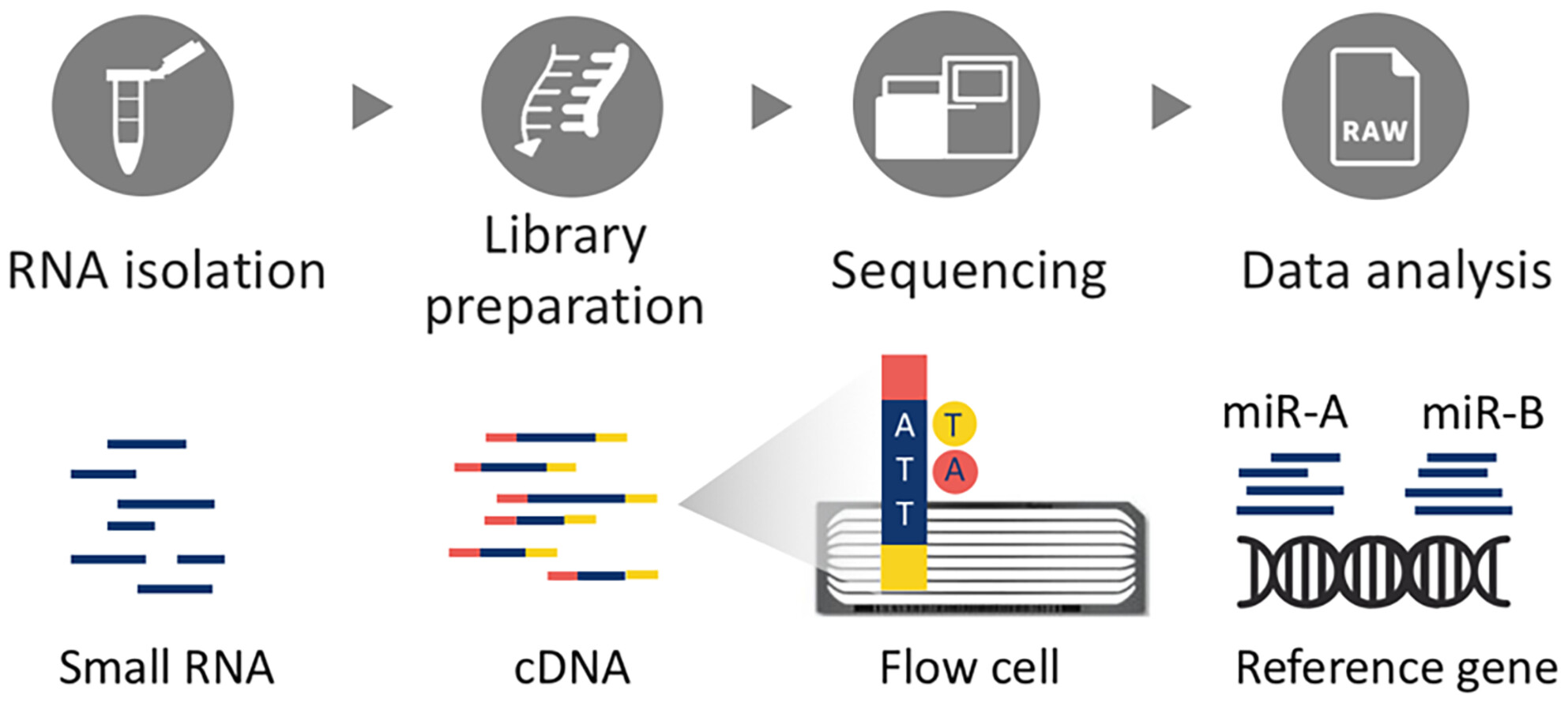 Technical considerations and review of urinary microRNAs as biomarkers for chronic kidney disease in dogs and catsCandice P. Chu, and Mary B. NabityVeterinary Clinical Pathology, 2024
Technical considerations and review of urinary microRNAs as biomarkers for chronic kidney disease in dogs and catsCandice P. Chu, and Mary B. NabityVeterinary Clinical Pathology, 2024MicroRNAs (miRNAs or miRs) are small, non-coding RNAs that play a crucial role in gene regulation, making them potential biomarkers for various diseases. In the field of veterinary medicine, there is a growing interest in exploring the diagnostic and therapeutic potential of miRNAs in kidney diseases affecting dogs and cats. This review focuses on the use of urinary miRNAs as biomarkers for chronic kidney disease (CKD) in these companion animals. We introduce miRNAs, their biogenesis, and their presence in biofluids, particularly within exosomes, and discuss studies investigating miRNAs in kidney tissue and urine. We acknowledge the challenges associated with miRNA studies, including preanalytical factors such as biological variation, sample collection/processing, storage conditions, and experimental design. We highlight the importance of technical considerations, such as sample pooling, sequencing depth, multiplexing, and the various steps of the miRNA experimental workflow. Furthermore, we discuss RNA isolation methods, small RNA sequencing data analysis, and the use of quantitative reverse transcription PCR (qRT-PCR) and droplet digital PCR for verification. We emphasize the importance of internal controls, spike-ins, and normalization methods to minimize technical variation and ensure reliable results in qRT-PCR analysis. This review concludes that while urinary miRNAs hold promise as non-invasive biomarkers for CKD in dogs and cats, addressing the challenges and standardization of protocols is vital for the successful translation of this research into clinical practice.
-
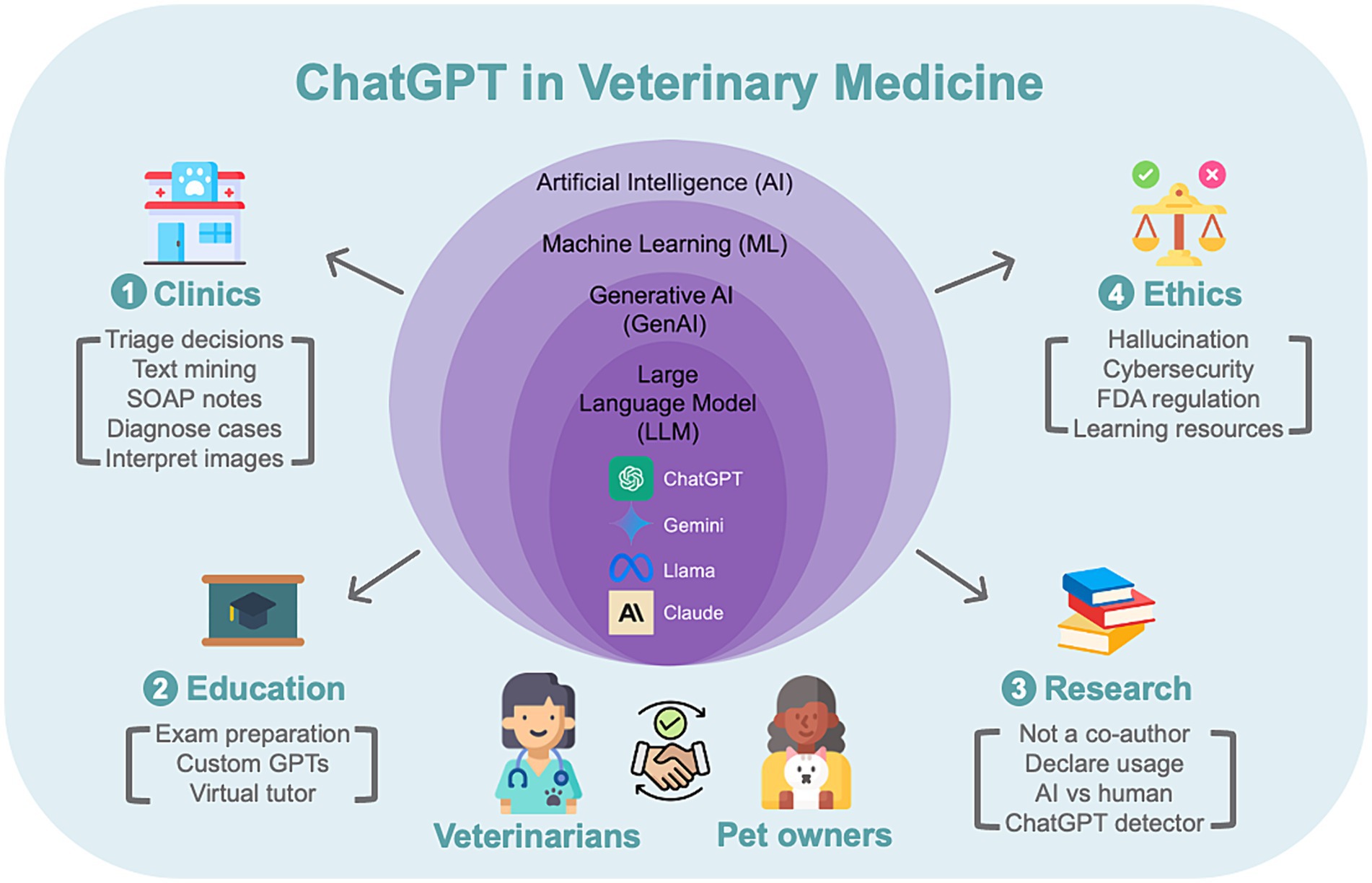 ChatGPT in veterinary medicine: a practical guidance of generative artificial intelligence in clinics, education, and researchC. P. ChuFront Vet Sci, 2024
ChatGPT in veterinary medicine: a practical guidance of generative artificial intelligence in clinics, education, and researchC. P. ChuFront Vet Sci, 2024ChatGPT, the most accessible generative artificial intelligence (AI) tool, offers considerable potential for veterinary medicine, yet a dedicated review of its specific applications is lacking. This review concisely synthesizes the latest research and practical applications of ChatGPT within the clinical, educational, and research domains of veterinary medicine. It intends to provide specific guidance and actionable examples of how generative AI can be directly utilized by veterinary professionals without a programming background. For practitioners, ChatGPT can extract patient data, generate progress notes, and potentially assist in diagnosing complex cases. Veterinary educators can create custom GPTs for student support, while students can utilize ChatGPT for exam preparation. ChatGPT can aid in academic writing tasks in research, but veterinary publishers have set specific requirements for authors to follow. Despite its transformative potential, careful use is essential to avoid pitfalls like hallucination. This review addresses ethical considerations, provides learning resources, and offers tangible examples to guide responsible implementation. A table of key takeaways was provided to summarize this review. By highlighting potential benefits and limitations, this review equips veterinarians, educators, and researchers to harness the power of ChatGPT effectively.
-
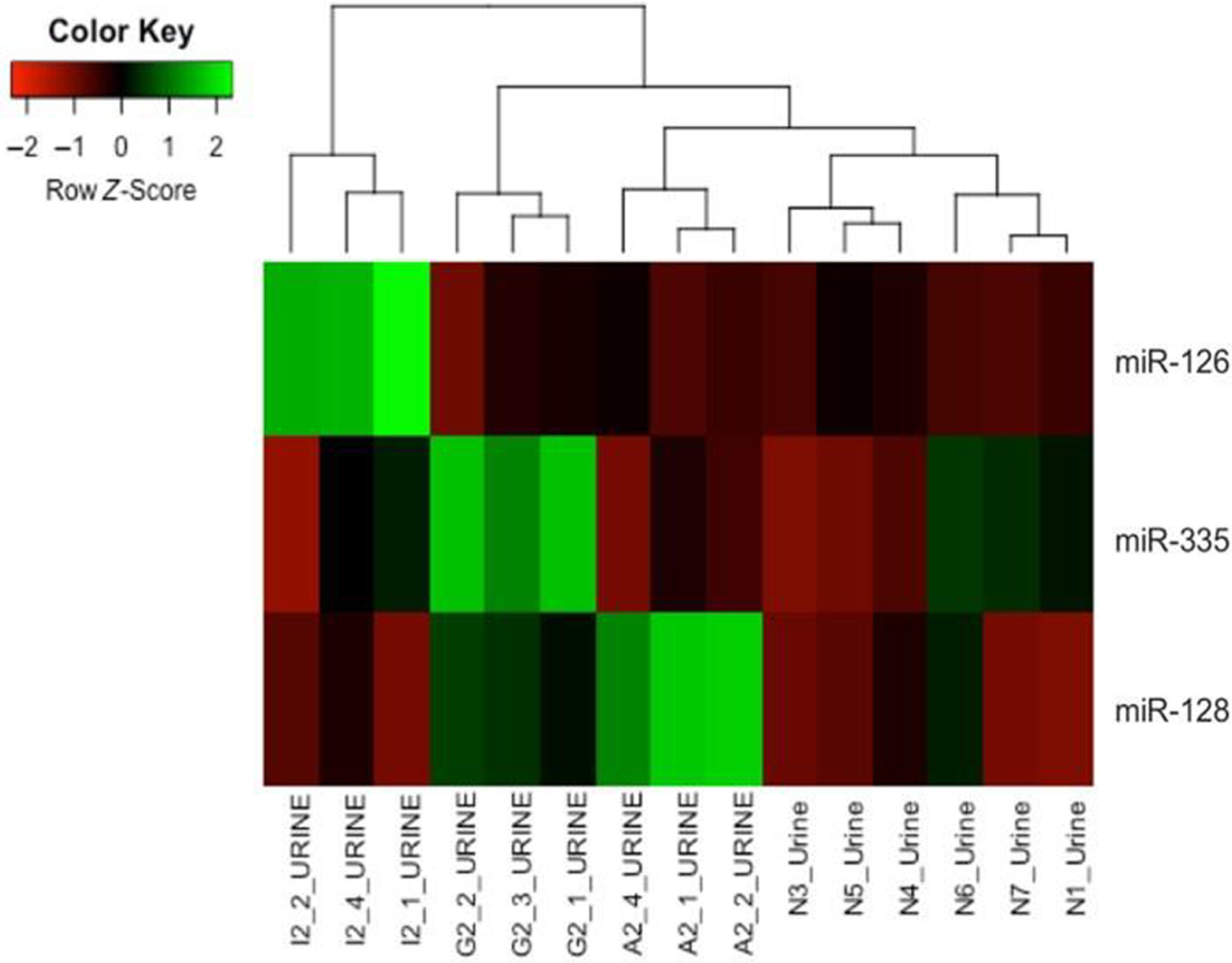 MicroRNA-126 in dogs with immune complex-mediated glomerulonephritisA. D. Cherry, C. P. Chu, R. E. Cianciolo, and 3 more authorsJ Vet Intern Med, 2024
MicroRNA-126 in dogs with immune complex-mediated glomerulonephritisA. D. Cherry, C. P. Chu, R. E. Cianciolo, and 3 more authorsJ Vet Intern Med, 2024BACKGROUND: Most proteinuric dogs with naturally occurring chronic kidney disease have amyloidosis (AMYL), glomerulosclerosis (GS), or immune complex-mediated glomerulonephritis (ICGN), each with different treatment and prognosis. A noninvasive and disease-specific biomarker is lacking. HYPOTHESIS: We hypothesized that the expression pattern of biofluid microRNA (miRNAs and miRs) would correlate with disease progression and categorization. ANIMALS: Archived serum and urine samples from 18 dogs with glomerular disease and 6 clinically healthy dogs; archived urine samples from 49 dogs with glomerular disease and 13 clinically healthy dogs. METHODS: Retrospective study. Archived biofluid samples from adult dogs with biopsy-confirmed glomerular disease submitted to the International Veterinary Renal Pathology Service between 2008 and 2016 were selected. Serum and urinary miRNAs were isolated and profiled using RNA sequencing. Urinary miR-126, miR-21, miR-182, and miR-486 were quantified using quantitative reverse transcription PCR. RESULTS: When comparing more advanced disease with earlier disease, no serum miRNAs were differentially expressed, but urinary miR-21 and miR-182 were 1.63 (95% CI: .86-3.1) and 1.45 (95% CI: .82-2.6) times higher in azotemic dogs, respectively (adjusted P < .05) and weakly correlated with tubulointerstitial fibrosis (miR-21: r = .32, P = .03; miR-182: r = .28, P = .05). Expression of urinary miR-126 was 10.5 (95% CI: 4.1-26.7), 28.9 (95% CI: 10.5-79.8), and 126.2 (95% CI: 44.7-356.3) times higher in dogs with ICGN compared with dogs with GS, AMYL, and healthy controls, respectively (P < .001). CONCLUSIONS AND CLINICAL IMPORTANCE: The miR-126 could help identify dogs that might benefit from immunosuppressive therapy in the absence of a biopsy. MiR-21 and miR-182 are potential markers of disease severity and fibrosis.
-
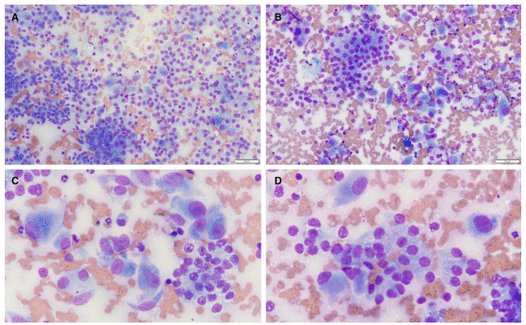 What is your diagnosis? Large perianal mass in a dogC. P. Chu, M. B. Nabity, B. F. Porter, and 1 more authorVet Clin Pathol, 2024
What is your diagnosis? Large perianal mass in a dogC. P. Chu, M. B. Nabity, B. F. Porter, and 1 more authorVet Clin Pathol, 2024
2023
-
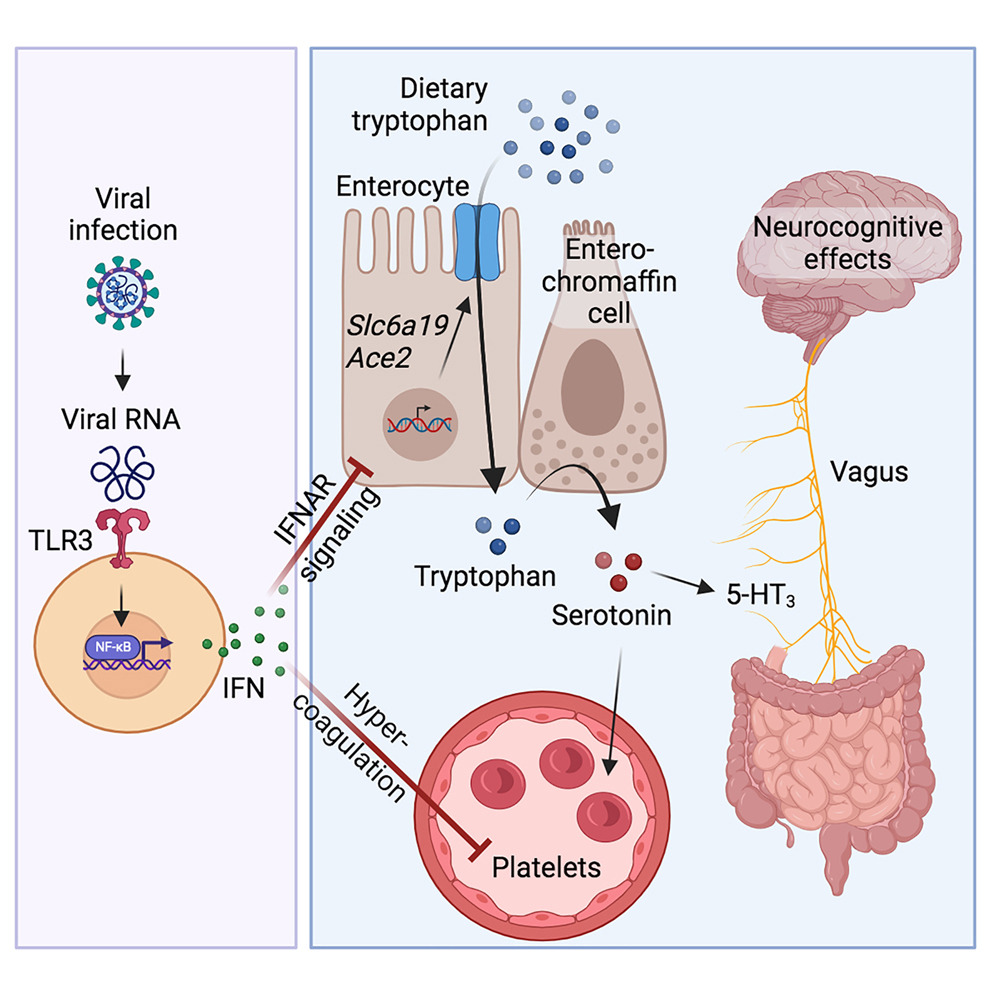 Serotonin reduction in post-acute sequelae of viral infectionA. C. Wong, A. S. Devason, I. C. Umana, and 56 more authorsCell, 2023
Serotonin reduction in post-acute sequelae of viral infectionA. C. Wong, A. S. Devason, I. C. Umana, and 56 more authorsCell, 2023Post-acute sequelae of COVID-19 (PASC, "Long COVID") pose a significant global health challenge. The pathophysiology is unknown, and no effective treatments have been found to date. Several hypotheses have been formulated to explain the etiology of PASC, including viral persistence, chronic inflammation, hypercoagulability, and autonomic dysfunction. Here, we propose a mechanism that links all four hypotheses in a single pathway and provides actionable insights for therapeutic interventions. We find that PASC are associated with serotonin reduction. Viral infection and type I interferon-driven inflammation reduce serotonin through three mechanisms: diminished intestinal absorption of the serotonin precursor tryptophan; platelet hyperactivation and thrombocytopenia, which impacts serotonin storage; and enhanced MAO-mediated serotonin turnover. Peripheral serotonin reduction, in turn, impedes the activity of the vagus nerve and thereby impairs hippocampal responses and memory. These findings provide a possible explanation for neurocognitive symptoms associated with viral persistence in Long COVID, which may extend to other post-viral syndromes.
2021
-
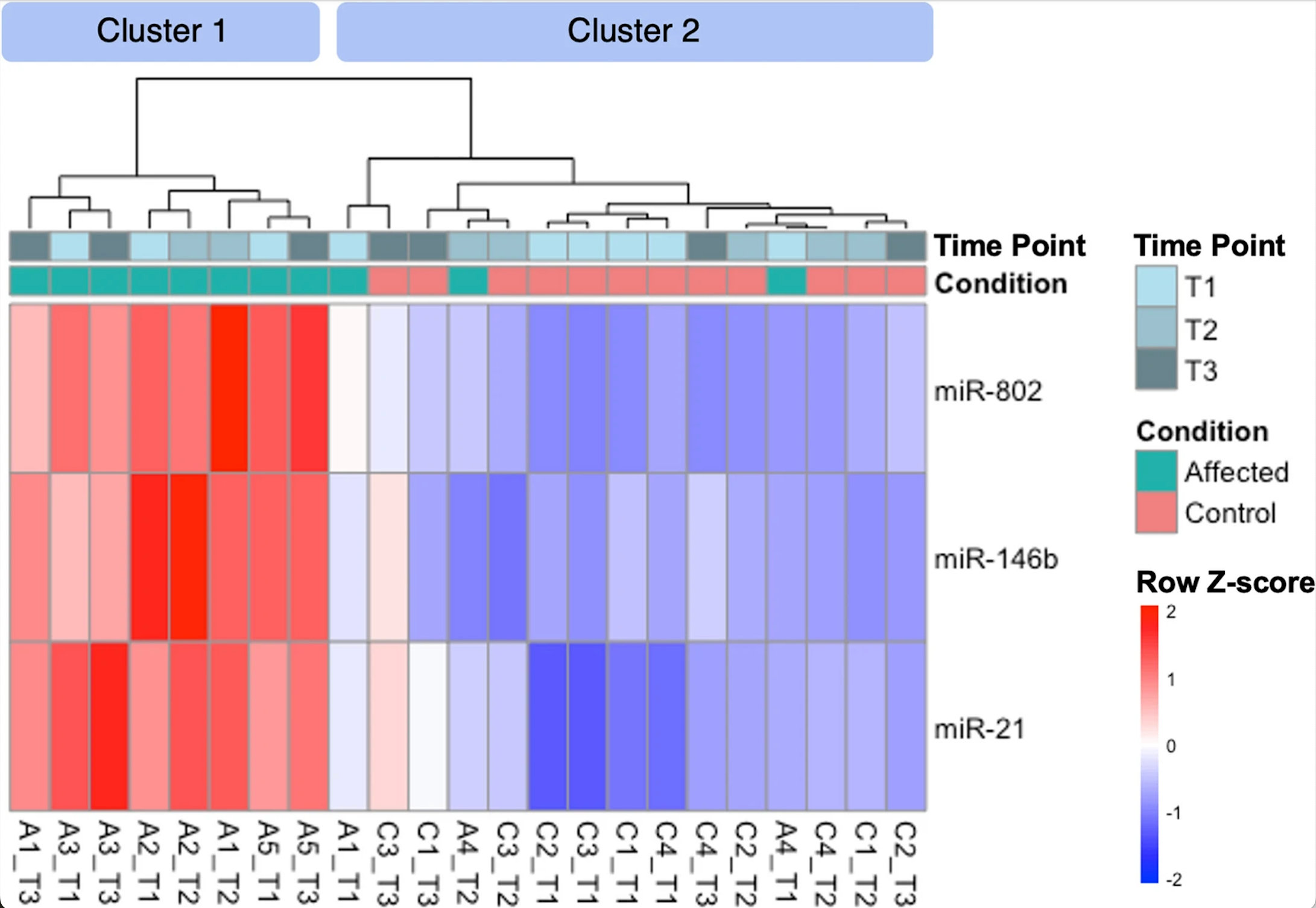 Small RNA sequencing evaluation of renal microRNA biomarkers in dogs with X-linked hereditary nephropathyC. P. Chu, S. Liu, W. Song, and 2 more authorsSci Rep, 2021
Small RNA sequencing evaluation of renal microRNA biomarkers in dogs with X-linked hereditary nephropathyC. P. Chu, S. Liu, W. Song, and 2 more authorsSci Rep, 2021Dogs with X-linked hereditary nephropathy (XLHN) are an animal model for Alport syndrome in humans and progressive chronic kidney disease (CKD). Using mRNA sequencing (mRNA-seq), we have characterized the gene expression profile affecting the progression of XLHN; however, the microRNA (miRNA, miR) expression remains unknown. With small RNA-seq and quantitative RT-PCR (qRT-PCR), we used 3 small RNA-seq analysis tools (QIAGEN OmicSoft Studio, miRDeep2, and CPSS 2.0) to profile differentially expressed renal miRNAs, top-ranked miRNA target genes, and enriched biological processes and pathways in CKD progression. Twenty-three kidney biopsies were collected from 5 dogs with XLHN and 4 age-matched, unaffected littermates at 3 clinical time points (T1: onset of proteinuria, T2: onset of azotemia, and T3: advanced azotemia). We identified up to 23 differentially expressed miRNAs at each clinical time point. Five miRNAs (miR-21, miR-146b, miR-802, miR-142, miR-147) were consistently upregulated in affected dogs. We identified miR-186 and miR-26b as effective reference miRNAs for qRT-PCR. This study applied small RNA-seq to identify differentially expressed miRNAs that might regulate critical pathways contributing to CKD progression in dogs with XLHN.
2019
-
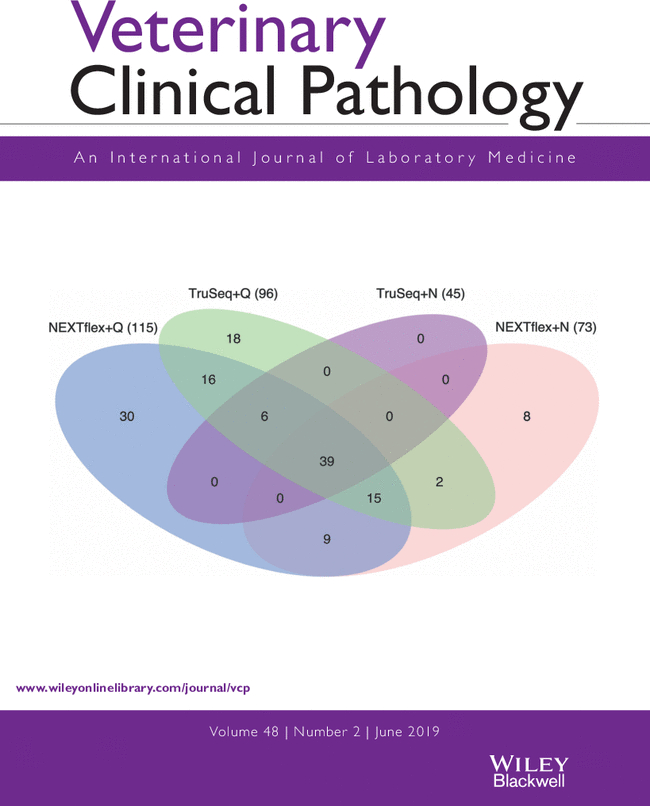 Comparison of RNA isolation and library preparation methods for small RNA sequencing of canine biofluidsC. P. Chu, and M. B. NabityVet Clin Pathol, 2019
Comparison of RNA isolation and library preparation methods for small RNA sequencing of canine biofluidsC. P. Chu, and M. B. NabityVet Clin Pathol, 2019BACKGROUND: Small RNA sequencing (RNA-seq) of biofluids is challenging due to the relative scarcity of microRNAs (miRNAs), limited sample volumes, and the lack of a gold standard isolation method. Additionally, few comparisons exist for the RNA isolation and sequencing methods of biofluids. OBJECTIVES: We aimed to compare the performance of six commercial RNA isolation kits and two library preparation methods for small RNA-seq using canine serum and urine. METHODS: Serum and urine were collected from seven dogs with protein-losing nephropathy, and the samples were pooled. Total RNA from serum (2 mL) and urine (10 mL) was isolated in triplicate using three methods each for serum (Zymo Direct-zol, mirVana PARIS, miRCURY Biofluids) and urine (Qiagen exoRNeasy, Norgen Urine Exosome, miRCURY Exosome). For each sample type, the two kits yielding the highest RNA concentration were selected, and small RNA-seq was performed using TruSeq and NEXTflex library preparations. Data were analyzed by CPSS 2.0 and DESeq2. RESULTS: For serum, Zymo Direct-zol combined with NEXTflex was the only combination that enabled successful library preparation, while for urine, Qiagen exoRNeasy combined with NEXTflex outperformed other combinations for detecting miRNAs. The total number of miRNAs detected in serum and urine was 198 and up to 115, respectively. miRNA expression in serum was distinct from urine. Furthermore, the library preparation method introduced a higher variation of urine results than the RNA isolation method. CONCLUSIONS: Different isolation and library preparation methods show significant differences in miRNA results that could affect biomarker discovery. Small RNA-seq provides an unbiased, global assessment to compare these methods in canine biofluids.
2018
-
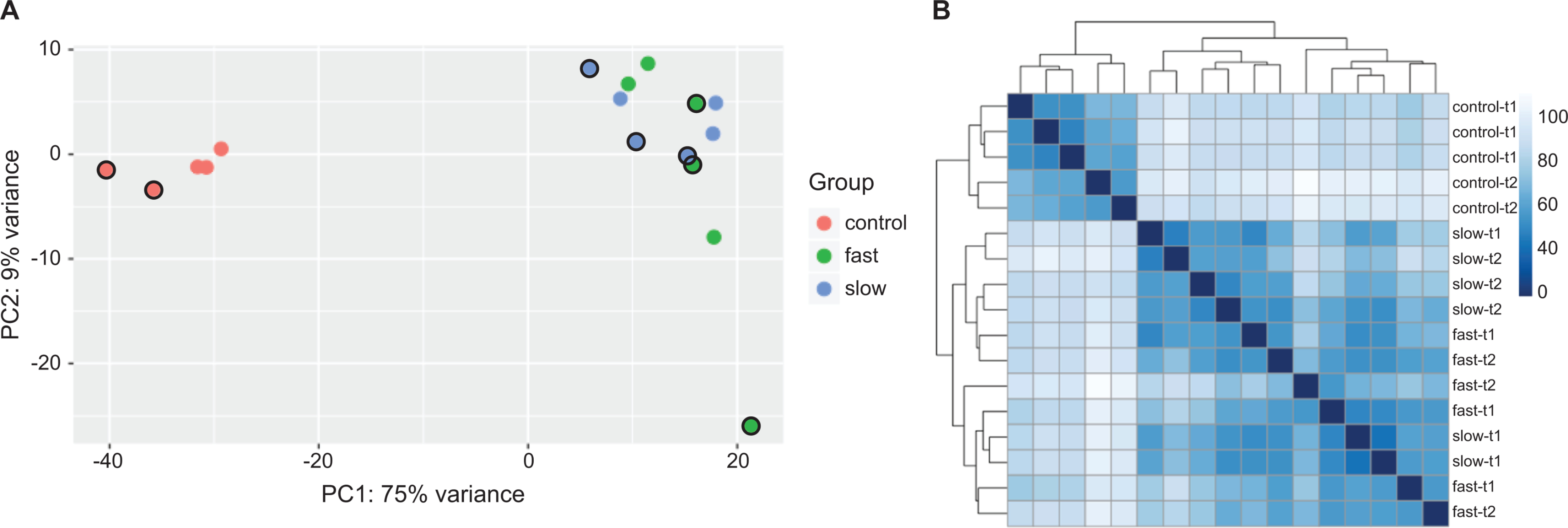 Expression profiling of disease progression in canine model of Duchenne muscular dystrophyC. Brinkmeyer-Langford, C. Chu, C. Balog-Alvarez, and 4 more authorsPLoS One, 2018
Expression profiling of disease progression in canine model of Duchenne muscular dystrophyC. Brinkmeyer-Langford, C. Chu, C. Balog-Alvarez, and 4 more authorsPLoS One, 2018Duchenne muscular dystrophy (DMD) causes progressive disability in 1 of every 5,000 boys due to the lack of functional dystrophin protein. Despite much advancement in knowledge about DMD disease presentation and progression-attributable in part to studies using mouse and canine models of the disease-current DMD treatments are not equally effective in all patients. There remains, therefore, a need for translational animal models in which novel treatment targets can be identified and evaluated. Golden Retriever muscular dystrophy (GRMD) is a phenotypically and genetically homologous animal model of DMD. As with DMD, speed of disease progression in GRMD varies substantially. However, unlike DMD, all GRMD dogs possess the same causal mutation; therefore genetic modifiers of phenotypic variation are relatively easier to identify. Furthermore, the GRMD dogs used in this study reside within the same colony, reducing the confounding effects of environment on phenotypic variation. To detect modifiers of disease progression, we developed gene expression profiles using RNA sequencing for 9 dogs: 6 GRMD dogs (3 with faster-progressing and 3 with slower-progressing disease, based on quantitative, objective biomarkers) and 3 control dogs from the same colony. All dogs were evaluated at 2 time points: early disease onset (3 months of age) and the point at which GRMD stabilizes (6 months of age) using quantitative, objective biomarkers identified as robust against the effects of relatedness/inbreeding. Across all comparisons, the most differentially expressed genes fell into 3 categories: myogenesis/muscle regeneration, metabolism, and inflammation. Our findings are largely in concordance with DMD and mouse model studies, reinforcing the utility of GRMD as a translational model. Novel findings include the strong up-regulation of chitinase 3-like 1 (CHI3L1) in faster-progressing GRMD dogs, suggesting previously unexplored mechanisms underlie progression speed in GRMD and DMD. In summary, our findings support the utility of RNA sequencing for evaluating potential biomarkers of GRMD progression speed, and are valuable for identifying new avenues of exploration in DMD research.
2017
-
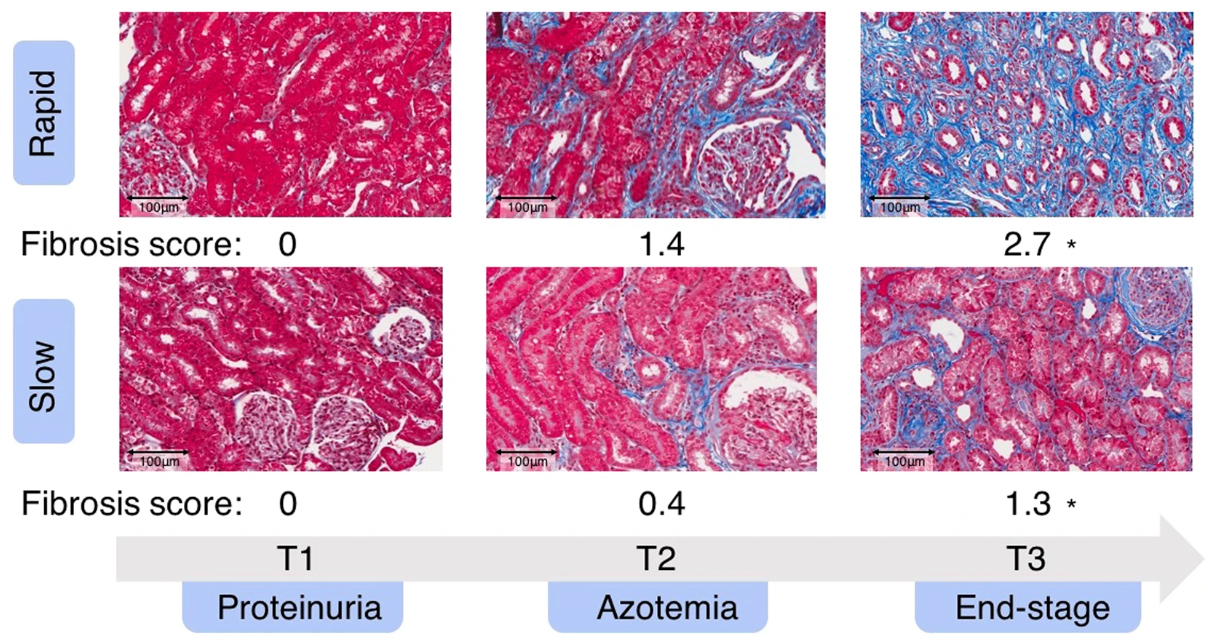 RNA-seq of serial kidney biopsies obtained during progression of chronic kidney disease from dogs with X-linked hereditary nephropathyC. P. Chu, J. A. Hokamp, R. E. Cianciolo, and 4 more authorsSci Rep, 2017
RNA-seq of serial kidney biopsies obtained during progression of chronic kidney disease from dogs with X-linked hereditary nephropathyC. P. Chu, J. A. Hokamp, R. E. Cianciolo, and 4 more authorsSci Rep, 2017Dogs with X-linked hereditary nephropathy (XLHN) have a glomerular basement membrane defect that leads to progressive juvenile-onset renal failure. Their disease is analogous to Alport syndrome in humans, and they also serve as a good model of progressive chronic kidney disease (CKD). However, the gene expression profile that affects progression in this disease has only been partially characterized. To help fill this gap, we used RNA sequencing to identify differentially expressed genes (DEGs), over-represented pathways, and upstream regulators that contribute to kidney disease progression. Total RNA from kidney biopsies was isolated at 3 clinical time points from 3 males with rapidly-progressing CKD, 3 males with slowly-progressing CKD, and 2 age-matched controls. We identified 70 DEGs by comparing rapid and slow groups at specific time points. Based on time course analysis, 1,947 DEGs were identified over the 3 time points revealing upregulation of inflammatory pathways: integrin signaling, T cell activation, and chemokine and cytokine signaling pathways. T cell infiltration was verified by immunohistochemistry. TGF-beta1 was identified as the primary upstream regulator. These results provide new insights into the underlying molecular mechanisms of disease progression in XLHN, and the identified DEGs can be potential biomarkers and therapeutic targets translatable to all CKDs.
